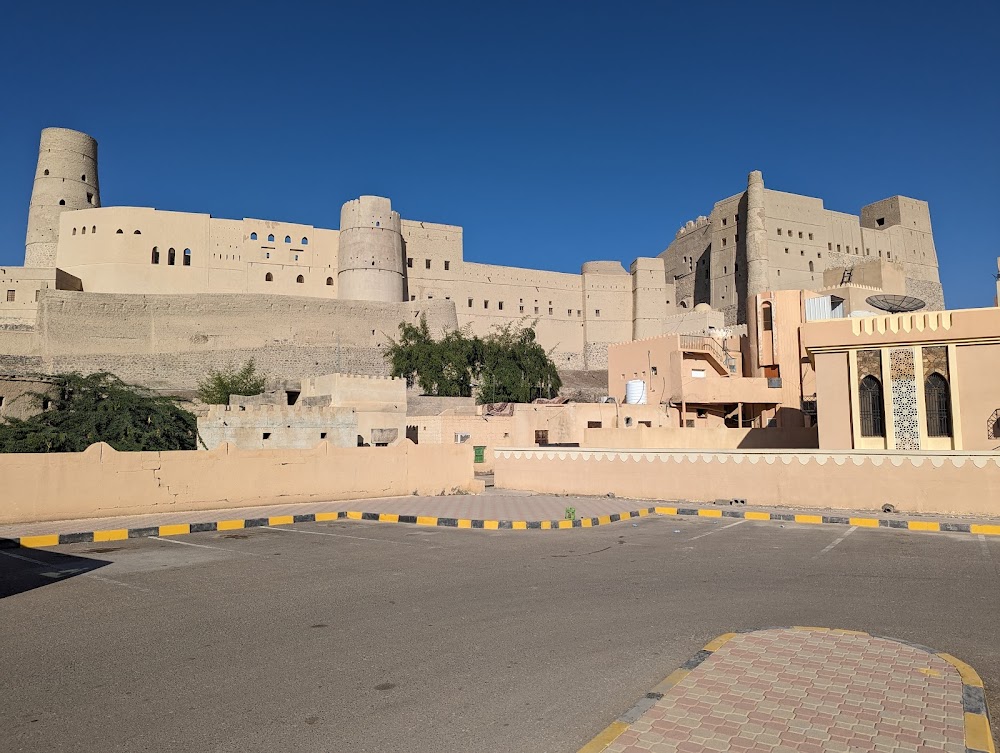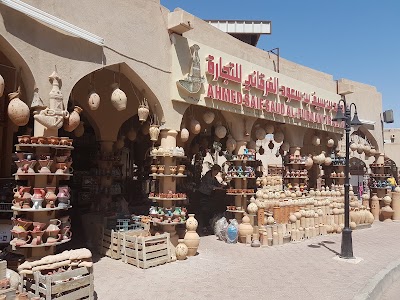Bahla Fort (قلعة بهلا)
Related Places
Overview
**Bahla Fort: A Majestic Symbol of Oman's Heritage**
Bahla Fort, an awe-inspiring historical structure nestled in the Ad Dakhiliyah region of Oman, stands as a proud emblem of the nation's rich heritage and architectural brilliance. This magnificent fortification reflects the ingenuity of its builders and the cultural significance of the area, making it a must-visit destination for history enthusiasts and travelers alike.
Constructed by the powerful Banu Nebhan tribe in the 13th and 14th centuries, Bahla Fort was strategically placed on elevated highland to oversee and control the surrounding oasis. This advantageous location not only allowed the tribe to safeguard their territory but also ensured a vital supply of water and fertile land, essential for sustaining their community. The fort’s design speaks to the tribe’s desire for dominance and protection during a time of political turbulence.
The fort's construction primarily utilized traditional materials such as mud bricks, palm tree beams, and lime plaster, demonstrating a practical and resourceful approach to building in Oman’s arid climate. These materials enabled the creation of massive walls and bastions that are both resilient and heat-resistant. Spanning approximately 13 acres, the fort's walls stretch nearly 12 kilometers, encircling the historic inner city of Bahla.
Visitors to Bahla Fort can explore a labyrinth of towers, chambers, and winding corridors. The architectural design showcases intricate carvings and patterned details, highlighting the exceptional craftsmanship and cultural influences of the era. Master masons skillfully blended defensive structures with aesthetic appeal, resulting in a fort that is as formidable as it is beautiful.
Inside the fort, guests will discover a variety of functional spaces, including residential quarters, meeting halls, and storage rooms. A remarkable mosque with unique prayer niches and several water wells further enrich the fort's complex layout. These various sections were meticulously designed to cater to both the administrative functions and daily lives of its inhabitants.
Another fascinating feature of Bahla Fort is its falaj, an ancient water distribution system that exemplifies the advanced engineering skills of its creators. This ingenious system ensured a consistent water supply from nearby wadis, supporting the needs of the fort's residents and the surrounding agricultural fields.
Over the centuries, Bahla Fort has been a silent witness to significant historical events and shifts in power. Despite undergoing numerous renovations due to natural wear and external conflicts, neglect and environmental factors led to severe deterioration by the late 20th century.
Recognizing its historical and cultural importance, restoration efforts commenced in the 1980s, focusing on preserving the original materials and traditional building methods used in its construction. In 1987, UNESCO added Bahla Fort and its surrounding oasis to the World Heritage List, granting it international recognition and support for its ongoing preservation.
Today, Bahla Fort is one of Oman’s most treasured cultural landmarks, attracting visitors eager to delve into its ancient architecture and rich history. As a testament to the ingenuity and resilience of its builders, the fort provides a captivating glimpse into the storied past of Oman, inviting all who visit to uncover the tales held within its enduring walls.









